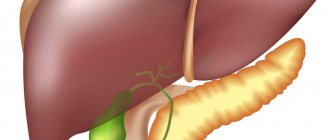Vaginismus is a condition that negatively affects a woman's ability to engage in any form of vaginal penetration, including sexual intercourse, as well as the insertion of tampons and penetration during gynecological examinations. This is the result of involuntary contraction of the pubococcygeus muscle. Involuntary contraction of the vaginal muscles occurs unexpectedly, which makes any vaginal penetration, including sexual penetration, very painful or completely impossible. This is an extreme form of painful sexual intercourse.
Women suffering from this disease cannot control such spasm. Involuntary vaginismus can be compared to blinking an eye when something foreign is trying to penetrate it. Difficulties from vaginismus and the degree of pain from penetration, including sexual penetration, are expressed differently in different women.
Causes of vaginismus and its treatment
Symptoms
It is not customary to talk about such a problem as vaginismus (colcospasm, or vulvism). Meanwhile, this is a serious neurotic disorder that threatens a woman’s sexual and reproductive functions.
Vaginismus means a reflex spasm of the muscle tissue of the genital organ and elevation of the anus, as a result of which sexual intercourse or gynecological manipulations are difficult or impossible at all.
Sexual neurosis, manifested in systemic involuntary contraction of the muscles of the pelvic organs, is diagnosed in approximately 3% of women. For vaginismus, treatment is strictly individual and complex. To get rid of neurotic pathology, the efforts of not only a gynecologist, but also a sexologist, psychotherapist, and proctologist are needed.
According to experts, the nature of vaginismus is based on a protective reflex reaction of the body caused by fear of defloration, pain during intercourse or during a gynecological procedure. A short-term or long-term reflex contraction of the muscles of the vagina, the walls of the peritoneum, contraction of the legs (hips), etc. occurs. In this case, vaginismus should be distinguished from:
- reluctance to have sexual intercourse (coitophobia);
- pseudovaginismus (mechanical contraction of muscles in response to a painful stimulus);
- anatomical abnormality of the vagina;
- diseases of the genital organ (colpitis, genital herpes, bartholinitis, scar formations, etc.).
The medical literature describes in detail cases of virgogamy (virgin marriage) due to vaginismus. If specialized assistance is not provided on time, the woman will develop an irreversible complex of sexual inferiority.
Before treating vaginismus, it is necessary to establish its causes, as well as the stage of manifestation.
Causes
Typically, the causes of vaginismus lie in psychological problems: rape or unpleasant memories of sexual intercourse, fear of an unwanted pregnancy.
Sometimes problems arise due to the deterioration of relations between partners. The pathology is observed in young women during the first sexual intercourse due to fear of defloration.
Vaginismus is confused with bacterial vaginosis and is called bacterial vaginismus. Vaginosis is an inflammatory process in the genital organs caused by the action of pathogenic bacteria; vaginismus is a psychosexual dysfunction. There is no such thing as bacterial vaginismus.
Women at risk for developing vaginismus include:
- emotionally labile;
- hysterical;
- with a history of fears and nervousness - fear of the dark, heights, water.
Why is this happening?
Doctors don't know exactly why vaginismus occurs. Most often this is associated with anxiety before sex, but it is not entirely clear which came first: anxiety or vaginismus. Analysis of the condition of patients with vaginismus suggests that vaginismus can occur both with every penetration and only in certain circumstances (for example, during sex with one partner and not with another).
Certain medical problems, including STIs, can also cause vaginismus. This is often associated with a traumatic experience - extremely painful sex or sexual violence.
Symptoms of the disorder
Reflex muscle spasms of the vagina, abdomen, thighs, as well as severe pain during sexual intercourse or touching the genitals are the main symptoms of vaginismus.
Muscle contraction can occur not only during a gynecological examination and sexual intercourse, but even when trying to perform them.
You may feel discomfort when inserting the tampon. With mild vaginismus, neurasthenia may occur. In severe forms, phobic neuroses, hysteria, as well as rapid heartbeat, vomiting, sweating, trembling, and loss of consciousness are possible.
Causes and types of disease
The main difference between vaginismus and other sexual disorders is the absence of physiological causes for its occurrence. This pathology is one of the types of neurosis, which is based on psychological trauma. Stress experienced leads to the development of vaginal hypersensitivity, when an attempt at penetration or the thought of it leads to involuntary muscle contraction. Experts distinguish between two types of vaginismus: primary and secondary. They are characterized by the same symptoms, but the causes of their occurrence and the principles of treatment differ significantly. Vaginismus Primary vaginismus develops in girls who have never had sexual intercourse with men before. A woman learns about the presence of the disease when she decides to enter into an intimate relationship for the first time or during her first examination by a gynecologist. The reasons for the development of this pathology may be:
- Having intimate life without vaginal penetration. Petting or other forms of sexual relations can cause a girl to change her psychological attitude towards traditional sexual intercourse. She can experience orgasm during intimate caresses and not even know about the presence of vaginismus. The first manifestations of pathology occur when attempting to penetrate the vagina.
- Overly strict upbringing in Puritan traditions. If a girl has been taught from childhood that intimate relationships with a man are vicious and should be avoided, then serious problems may arise with the onset of sexual activity.
- Fear of defloration. Many girls know that the first sexual intercourse can be extremely painful. Anticipation of pain leads to involuntary contraction of the vagina.
- Girls who are predisposed to homosexuality may also have manifestations of vaginismus.
- Psychological trauma suffered by a child in childhood. If a girl has become a victim of a rapist or witnessed a similar scene, this can also lead to uncontrollable spasms of the vaginal walls.
- Other fears that do not have a direct connection with manifestations of sexuality can also lead to the development of this pathology. In this case, vaginismus is considered as one of the body’s phobic reactions.
Primary vaginismus can also occur against the background of mental disorders or developmental delays. Secondary vaginismus develops in a woman who previously had a full sexual life. Symptoms of sexual dysfunction may result from:
- a woman's experiences of her partner's erectile dysfunction. Often women blame themselves for sexual impotence; uncontrollable muscle spasms may occur as a result of these worries;
- violence, both sexual and physical;
- difficult childbirth, as a result of which the woman suffered ruptures and other injuries to the vagina. Vaginismus in this case occurs as a protection against the onset of a new pregnancy, which can lead to a recurrence of the painful situation;
- undergone surgical operations.
Vaginal cramps can occur during menopause. This is due to a sharp change in hormonal levels. Vaginismus is difficult to diagnose, since its symptoms are similar to those of various gynecological or sexual pathologies. Only a highly qualified specialist can identify this disease, identify its causes and carry out competent treatment.
Consequences and prognosis
Long-term colpospasm can cause the development of self-doubt, the formation of deep complexes, emotional and mental disorders. Lack of sex life affects relationships with men. Constant stress and psychological tension negatively affect the state of hormonal levels, reduce the body's defenses and lead to the appearance of somatic diseases.
The prognosis is favorable. With proper treatment, a woman can fully enjoy intimate relationships and give birth to children.
Forms
Modern medical science identifies quite a lot of different types, forms and types. Let's look at the most common classification. According to it, there are false and true forms of vaginismus. In the first case, there is not so much a physiological problem as its psychological cause - neurosis, phobia, etc. In the second, we are dealing with specific anatomical and functional problems of the genital organs.
The so-called phobic and hysterical forms are also distinguished.
Phobic vaginismus implies that a woman has persistent phobias in relation to sexual intercourse. Moreover, in most cases the patient cannot explain the nature of these fears or somehow justify them. Moreover, the patient understands that her fears are completely unfounded, but she cannot do anything about them. An attempt at sexual intercourse in this case ends with the closing of the vaginal muscles or even the thighs.
According to experts, the root of phobic vaginismus is a persistent conditioned reflex, which is very difficult to get rid of on your own. Interestingly, there is a possibility of pregnancy with a phobic form of vaginismus, and in most cases, after childbirth, the problem of vaginismus disappears by itself.
Hysterical vaginismus is fundamentally different from phobic vaginismus. Thus, this form of the disease is characterized by problems with penetration specifically in relation to a specific partner. A woman may well not realize that all her problems stem from her reluctance to have intimacy with a specific partner. And all attempts at medicinal influence in this case are deeply secondary and do not give the desired result. The patient thinks that she is sick, is looking for ways to overcome vaginismus, but when she tries to have sexual intercourse with another man, she discovers that the problem has disappeared by itself.
Classification of vaginismus
Vaginismus is divided into two types:
- Primary - when a woman has never had vaginal penetration. This type is often observed in women under 20 years of age or in teenagers.
- Secondary - due to certain reasons, vaginal penetration is no longer possible. This type can develop as a result of gynecological operations or a course of radiation therapy.
There are true or false vaginismus. True vaginismus is a sexual neurosis caused by psychogenic problems . This pathology is not associated with functional or anatomical disorders of the genital organs.
According to the severity of the disorder, there are:
- 1st degree – spasmodic contraction of the vaginal muscles when attempting to insert the penis or during a gynecological examination;
- 2 degrees – muscle contraction when touching the genitals or waiting for touching;
- Grade 3 – muscles contract at the mere thought of sexual intercourse.
Treatment of vaginismus
If you are interested in how to treat vaginismus, please note that the course of treatment should be comprehensive and combine several techniques. Moreover, in each individual case an individual program of such treatment is selected. To learn how to get rid of vaginismus, check out the following treatments:
- Elimination of painful sensations that can arise for various reasons. For this purpose, anti-inflammatory therapy, treatment of anal fissures, and local anesthesia can be used.
- Gynecological massage - it is carried out using special instruments to relax the pelvic muscles, as well as eliminate unreasonable tension before sexual intercourse.
- Breathing exercises, physiotherapy, reflexology.
- Psychotherapy. In most cases, the causes of vaginismus are fears and phobias, which you can try to get rid of during psychotherapy sessions. During such consultations, a woman learns to express her desires and raises her self-esteem. In addition, attention is paid to eliminating mental trauma that could cause pathology.
- Hypnotherapy.
- Sex therapy, which is carried out with two partners. During conversations with a psychologist, special attention is paid to the importance of creating the most comfortable environment for both partners before sexual intercourse.
- Drug treatment. Namely, patients are often prescribed tranquilizers to relax and eliminate feelings of fear. External medications with an anesthetic effect may also be prescribed.
- Surgical defloration. This technique is indicated in particularly difficult cases when other methods do not help get rid of the fear of sexual intercourse. A surgical solution to the problem helps to significantly facilitate further treatment. In most cases, it is advisable to perform the operation without anesthesia. But the patient should be distracted before doing this. For example, during an examination, the doctor can quickly insert a speculum or dilator into the vagina. However, this method does not always help. The woman understands that after surgical defloration she will not feel pain during intercourse, but she still feels fear.
Treatment of vaginismus
Treatment
It is well known how to treat vaginismus effectively and without any consequences for a woman and her intimate relationships. There are both conservative methods and various surgical methods. The problem is that many representatives of the fair sex are embarrassed or afraid to seek medical help.
Traditional methods
Treatment of vaginismus includes many approaches and methods. The main stages in overcoming this disease are as follows:
- Finding out the root of the problem. Only a detailed study of the root cause can help find the most effective treatment methods in each specific case. The sexual development of a woman is studied in detail.
- Training in relaxation techniques. For example, if a sudden attack of vaginismus occurs, a woman should calm down and tense her abdominal muscles, which will feel like pushing. Then the man needs to insert a finger into the rectum and press on the anus, as a result he will be able to free his penis.
- Also, a separate stage always includes complexes that help a woman learn to control her own pelvic floor muscles.
- Physiotherapy, the action of which is aimed at relaxing the muscles of the perineum, as well as relaxation of the whole body. Also, these methods are effective in the presence of adhesions both in the pelvic cavity and in the vagina.
- Spinal cord stimulation is one of the latest techniques developed to treat anorgasmia and other sexual disorders, including vaginismus, using not drugs or exercises, but electrical impulses applied to nerve endings through electrodes placed in the epidural space.
- There are even special programs with vaginal dilators. They are not intended to expand the vagina, but to retrain the muscles, which, together with psychotherapeutic and drug therapy, gives excellent results.
- Also, in some cases, medications can be used that have a muscle relaxant effect and block the flow of nerve impulses to the muscles of the perineum.
- In some situations, when an organic pathology is identified that led to vaginismus, it is treated separately. This can be anti-inflammatory therapy, hormonal therapy (during menopause) and others.
Psychological help
The help of a psychotherapist or sexologist is always necessary; this is the only way the treatment process will be as effective as possible.
This is especially true in the presence of some traumatic situation when a woman cannot cope with it on her own, for example, after sexual violence, etc. Only with the help of such specialists can one recognize blocked or hidden memories in the subconscious, which can have a decisive role in treatment.
In many situations, the work of a sexologist is important. It is he who helps a woman understand the whole essence of intimate relationships, explains all the subtleties and nuances. He also recommends positions in which it is easiest to control your emotions, muscles, and make pain minimal.
Clinical picture
This psychosexual disorder is manifested by spasm of the muscles of the vagina, perineum and inner thighs, which makes it impossible to insert a speculum or penis inside. Symptoms of the disorder are complemented by severe pain.
There are three degrees of this disorder. The first degree is when the symptoms are mild and spasm occurs only during the initial stage of penile insertion. In the second degree, spasm develops not only when the penis or speculum is inserted into the vagina, but even with simple touching of the genitals. And the most severe form, the third, the symptoms of which are similar, but develop even when a woman thinks about sexual contact.
As mentioned above, due to a woman’s inability to obtain sexual release, her symptoms of psychosomatic disorders increase. In particular, she becomes irritable, gets tired quickly, and experiences mood swings and depression.
The course of vaginismus
Vaginismus can be observed in absolutely all women and girls, regardless of age and sexual experience. For each of them, the variants of vaginismus occur differently:
- In the majority of sick women, penetration into the vagina is impossible.
- There are cases when, when passing the penis, very painful and strong contractions appear.
- The woman reaches the arousal point, but due to discomfort she cannot have an orgasm.
- Some women endure unpleasant and painful sensations for many years, and eventually give up sex altogether.
What is vaginismus and how to cure it?
Sexual relations between a man and a woman are an integral part of family life. In most cases, responsibility for the quality and duration of sexual intercourse rests with the man. But what to do if intimacy between partners is impossible in principle, due to certain psychological problems on the part of the woman, for example, with vaginismus?
Vaginismus is a condition in which penetration of the penis into the vagina is difficult due to muscle spasm of the vagina. What are the causes of vaginismus? Are there treatments for vaginismus, followed by the resumption of normal sexual relations? This problem often gets in the way of pregnancy and a happy family life, and therefore requires detailed consideration.
Vaginismus: when sex is painful. By definition, vaginismus is a condition in which a woman's thighs tighten and the muscles of the vagina and pelvic floor spasm, preventing penile penetration. Convulsive activity of the vaginal muscles is accompanied by pain and burning, as a result of which the desire for sexual intercourse in a woman disappears without a trace.
Vaginismus can also manifest itself with the following symptoms:
- lack of sexual arousal;
- anorgasmia;
- insufficient sexual desire;
- painful or unpleasant sensations during sexual intercourse.
According to statistics, approximately 5-10% of women face the problem of vaginismus, experiencing a feeling of sexual dissatisfaction and inferiority due to the inability to conceive a child. Most often, the pathological condition occurs in young girls under 25 years of age, which may be associated with problems with the “debut” of intimate life. Most of the women suffering from vaginismus are unable to control the condition, as a result of which they remain virgins even after marriage. The intensity of pain with vaginismus can reach such a level that any attempts to have sex provoke a strong fear of sexual intimacy.
Why does vaginismus occur?
Experts say that the development of vaginismus has no relationship with diseases of the reproductive system and developmental anomalies of the female genital organs. Vaginismus is a kind of defensive reaction, thanks to which the female body prevents coitus.
Basically, the occurrence of vaginismus is influenced by the following psychological factors:
- fear of the “first time” (fear that losing virginity will be extremely painful);
- bad experience of sexual intercourse (rough treatment during sex, rape);
- fear (auditory, visual);
- aggressive or insufficiently active behavior of the sexual partner;
- hidden homosexuality;
- psychological disorders (neurasthenia, hysteria, psychosis, obsessive-compulsive disorder);
- fear of getting pregnant;
- upbringing in a religious family (from childhood the girl was instilled with certain ideological values, claiming that sex is a sin);
- lack of sexual attraction to a partner.
It is worth noting that pathology of the reproductive system organs can also influence the development of vaginismus in women.
These conditions include:
- dysparenuria (pain during and after sexual intercourse);
- episiotomy during childbirth (incision of the perineal muscles followed by suturing);
- inflammatory processes (cervicitis, colpitis, vaginitis);
- dryness at the entrance to the vagina (insufficient lubrication);
- insufficient defloration (too elastic hymen);
- endometriosis.
In the presence of diseases of the reproductive system and cases of spasms of the vaginal muscles during sexual intercourse, in most cases we are talking about pseudovaginismus. True vaginismus is one of the manifestations of psychological disorders.
Signs by which vaginismus can be recognized:
- Spasm of the pelvic floor and vaginal muscles during sexual intercourse or thoughts of sexual intercourse;
- Inability to conduct a gynecological examination;
- Pain, burning, discomfort in the genital area during sex;
- Touching the external genitalia causes spasm of the vaginal muscles.
Types of vaginismus:
- True vaginismus (occurs against the background of psychoemotional disorders)
- False or pseudovaginismus (develops in the presence of diseases of the pelvic organs)
The development of pseudovaginismus is preceded by pain, as a result of which a woman develops a persistent reflex to recurrent pain sensations.
Based on the time of occurrence, they are distinguished:
- primary vaginismus (develops in women who have never had vaginal penetration; the first insertion of a tampon, examination with gynecological instruments, and sexual intercourse are accompanied by pain);
- secondary vaginismus (can develop at any age against the background of an active sexual life).
Degrees of vaginismus:
- Mild (characteristic of neurasthenic disorders): contractile activity of the vaginal muscles develops with insertion of the penis;
- Medium (cause - hysteria, neuroses): spasm of the vaginal muscles occurs against the background of touching the genitals;
- Severe (results from severe neuroses or hysteria): convulsive contractions of the vagina occur when thinking about sex, as well as as a result of a gynecological examination.
Diagnosis of vaginismus. Many women are simply embarrassed to share this problem with a doctor, which greatly complicates the diagnosis of the disease. In most cases, it is an uncontrolled spasm of the vaginal muscles by a woman during an examination by a gynecologist that indicates the presence of vaginismus. To confirm the diagnosis, a woman must undergo a complete examination of the pelvic organs, including analysis for hidden urogenital infections.
How to treat vaginismus?
After a thorough examination by a gynecologist in order to exclude pathological processes in the reproductive system, it is necessary to visit a psychotherapist or sexologist. The cause of vaginismus may be hidden in the relationship with a partner, the presence of childhood fears or psychological trauma.
Problems in sexual relationships affect not only women, but also men. Very often, vaginismus contributes to the development of male sexual impotence (impotence), erectile dysfunction, decreased libido, etc. To increase the effectiveness of the therapy, both partners must undergo treatment.
Treatment by a neuropsychiatrist must be combined with a special program prescribed by a doctor. Therapy includes exercises aimed at eliminating the fear of the presence of a foreign body in the vagina. Light relaxing massage and aromatherapy are used as aids in the treatment of vaginismus. Sometimes a few weeks of vigorous action are enough to eliminate vaginismus. Remember, the woman who loves and is loved can be called happy.
Causes of vaginismus
Vaginismus occurs in 2-5% of cases of first intimate contact at a young age. This is easily explained by the fear of pain during defloration; sometimes a painful spasm occurs directly during insertion of the penis by a partner. However, in many cases, vaginismus is the result of a negative sexual experience. Treatment of vaginismus should be based on the identified causes.
It is interesting that sometimes the source of the problem is not assertiveness or rudeness, but, on the contrary, excessive softness and indecisiveness of the sexual partner. Subconsciously, the woman considers him not masculine enough, deserving of intimate relationships, does not experience attraction and “postpones” defloration. Emotional tension almost always accompanies muscle spasms.
There are other causes of vaginismus:
- fears associated with beliefs (religious beliefs regarding the “impurity” of intimate intimacy, stereotypes imposed by strict parents, shame/guilt arising in response to the appearance of sexual arousal, etc.);
- fears associated with possible pregnancy and childbirth;
- genital injuries, diseases of the vaginal mucosa, previous surgical interventions, difficult childbirth;
- dryness of the vaginal mucosa, rigidity of the hymen or its residue after incomplete defloration, etc., are factors that cause severe pain and reflex spasm;
- conflicts between partners, quarrels, grievances against a man, betrayal of a partner (treatment of vaginismus may involve family psychotherapy);
- sexual unattractiveness of the partner (when the marriage is based on friendly relations, for reasons of social convenience, respect, but the woman does not experience sexual attraction to her husband);
- a man’s inability to have full sexual intercourse (unstable erection, premature ejaculation and other disorders);
- non-traditional sexual orientation of a woman.
Researchers identify two types of neurotic individuals who are more prone to the formation of vaginismus: women with an infantile attitude towards sex (religious prohibitions, anti-sexual ideas, ignorance of their body and genital area, internal “prohibitions” on receiving pleasure, poor awareness of sexual relationships); women with an aggressive attitude towards men, inclined to compete with them.










